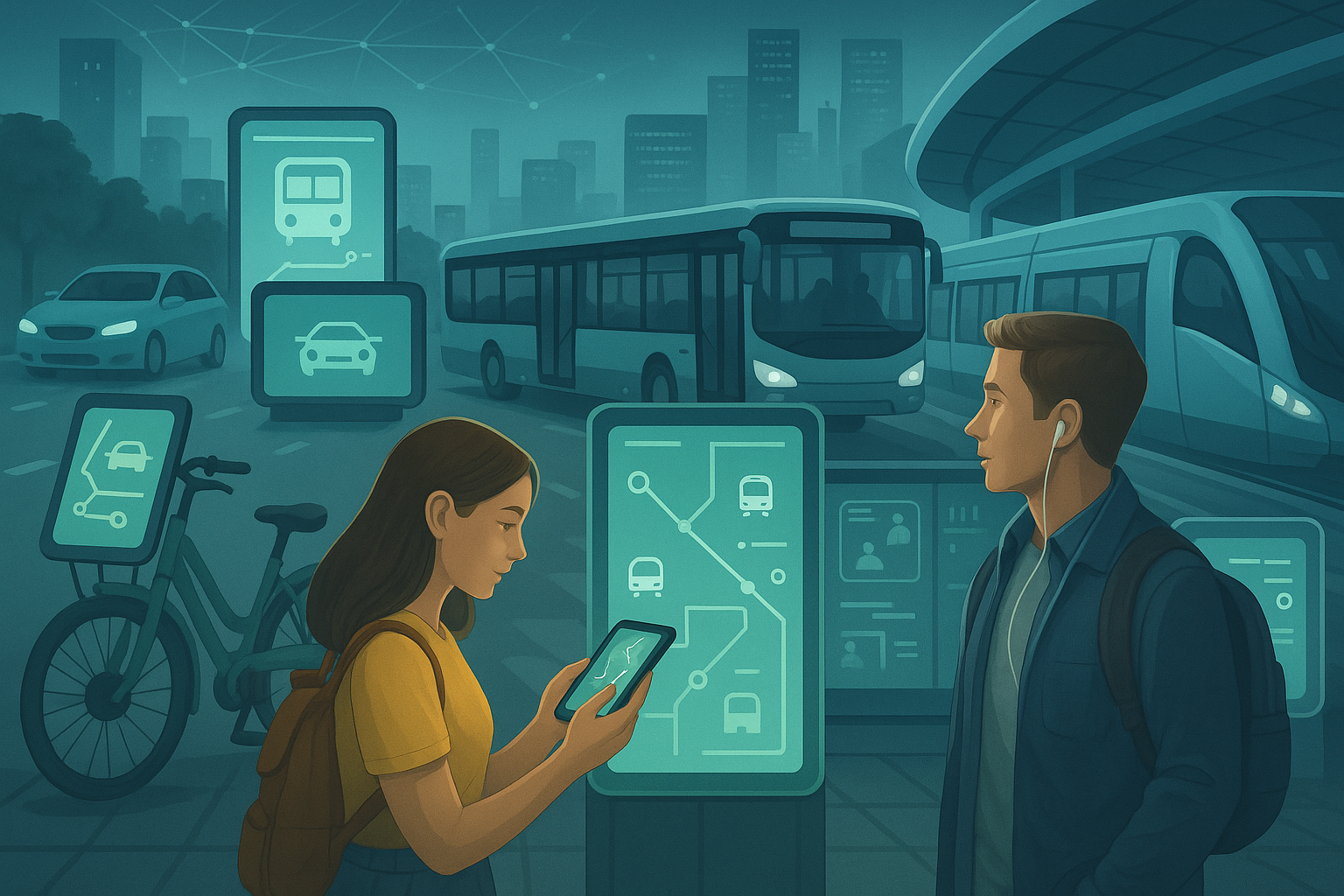How Digital Platforms Are Reshaping Urban Mobility

Mobility within the city remains a constant issue. As population densities rise and demands for effective transport grow, aging systems fall behind. Congestion, inefficiencies, and bad passenger experiences are an everyday annoyance to millions of passengers every day. Yet something is taking place in the background—a revolution through digital platforms that are reshaping how a city moves.
With intelligent transport systems, passenger utilisation, and real-time data analytics, digital platforms are connecting people and infrastructure. The outcome is an effective, well-integrated, and passenger-focused mobility ecosystem.
The Digitisation Transport Revolution
Transport systems themselves also operated in silos for decades—drivers, operators, passengers, and transport authorities all working on separate information. A bus delay, for example, can leave travellers stuck on the road with no clue, while jammed depots haunt operators.
Those are being transformed by digital platforms into an integrated system, where data, communication, and decision-making converge. With AI, IoT, and cloud-based solutions, transportation becomes not merely reactive but predictive, dynamic, and passenger-centric.
Real-Time Information for Smarter Travel
The contemporary passenger desires something more than print timetables. He/she desires correct, real-time information regarding his/her journey—bus arrival times, flight delays, seat availability of the metro, etc.
All these technologies, including Passenger Information Display Systems (PIDS) and Transit App Pro software, facilitate this transparency. Passengers are given access to buses, purchasing tickets, and even advance notice of disruptions. This transparency reduces confusion and promotes a healthy rapport between transport service providers and travellers.
Artificial Intelligence and Evidence-Informed Decision Making
In the background, city transport is becoming intelligent through the application of AI-based analytics. Software over the web, such as Schedule Smart and Route Genius, makes use of route optimisation algorithms, demand balancing, and anticipating future demand.
Rather than having fixed timetables, operators are able to adjust services to fluctuating traffic, passenger demand, or event conditions in real time. This minimises congestion as well as minimises running costs and fuel, making transport greener and more sustainable.
Seamless Passenger Experience
The creation of web-based systems also changed how transport systems are used by passengers themselves. Purchasing tickets, organising multi-modal trips, and retrieving live announcements are all offered in a single application.
Picture arranging a bus, subway, and rideshare trip all combined—not alternating between multiple apps or even sets of payment systems. End-to-end, integrated travel trips are streamlined with software like Passenger Booking Systems and Conductor Pro.
Safety and Emergency Preparedness
Information technologies also enhance transportation safety. Technologies such as Emergency Management Systems (EMS) and Vehicle Intelligent Monitoring Systems (VIMS) are employing video analytics and artificial intelligence to detect threats of impending danger beforehand. Driver fatigue, overloading, or a state of emergency—such situations prompt these systems to warn in real-time to prevent accidents and safeguard passengers.
Sustainability and Smart Cities
Urban transportation is a central component of the smart city initiative. Websites have an essential role in minimising carbon emissions, streamlining traffic, and encouraging environmentally friendly decisions. For example, Park Finder assists motor drivers to find parking places in good time, cutting down on idle time for vehicles and pollutants.
Through resource optimisation, mobility sharing, and electrification of vehicles, websites are leading the way to cleaner, greener urban living.
Challenges Along the Way Ahead
Though virtual platforms are greatly advantageous, they do have issues. Some of the urgent issues are cybersecurity, privacy of data, and compatibility with existing infrastructure. The urban cities and operators must also ensure that technology is inclusive, i.e., not only for Internet-savvy passengers but also for the less Internet-savvy ones.
The Path to the Future
Digital platform integration, AI, and IoT will continue to make urban mobility intelligent in the future. Imagine transport networks that have passenger demand forecasting, dynamically reroute, and provide end-to-end autonomous modes of transport. To the passenger, it would be frictionless, personalised, and seamless travel. To cities, it will be transport networks that are efficient, resilient, and sustainable.
Conclusion:
Digital platforms are no longer just tools—they are the engines driving the future of urban mobility. By uniting passengers, operators, and systems into a connected ecosystem, they are reshaping transport into something smarter, safer, and more sustainable.
At Arenasoftwares, we are proud to be at the forefront of this transformation. From RouteSync solutions to AI-powered ITMS platforms, our goal is to help cities and organisations embrace the future of mobility—one where people come first and technology makes every journey better. Because urban mobility isn’t just about moving vehicles. It’s about moving lives—and with digital platforms, we’re moving them smarter than ever.
